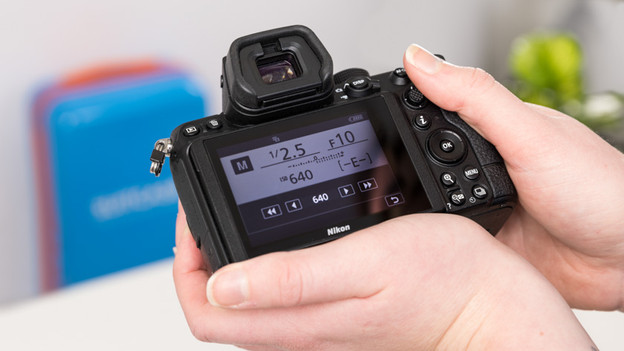Written by Sanne
Edited on
17 April 2023
·
09:30
What do the settings on my mirrorless or SLR camera mean?
You have a mirrorless or SLR camera, but you never get the effect you're looking for. By manually adjusting the ISO, shutter speed, and aperture, you'll get your subjects in the picture the way you want. In this article, you'll read what exactly these settings entail and how they work together in the lighting triangle.
In short
The shutter speed, the aperture, and the ISO sensitivity all have an effect on the lighting for your photo. That's why they're called the lighting triangle. As soon as you adjust one of the 3, you'll need to adjust the other 2 as well in order to maintain the balance. It's best to think of the aperture as the handle on a faucet, the shutter speed as the time you leave the faucet running, and the ISO as the size of the glass you're filling.


Shutter speed
With the shutter speed, you determine whether the subject will be frozen or moving in the photo. The former is mainly useful for action photos. Most cameras feature shutter speeds between 30 seconds and 1/4,000 of a second. The shorter you leave the shutter open, the stiller the subjects will be in the photo. Want to photograph a waterfall where the water seems to be flowing? Keep the shutter open for a long time. You should also do this if you want to capture white and red light stripes from cars in the photo.

Aperture
The aperture is indicated with an F, and it determines the depth of field ratio of the photo. With a low aperture value like 2.8, you'll create a large contrast between the parts that are in focus and those out of focus. If you choose an aperture of 11 or higher, everything on the photo will slowly get equally sharp. A low aperture value is useful for portrait photography, because only the person will be in focus this way. Higher values work well for landscape photography, since you'll want everything to be equally sharp in that case.

ISO
The image sensor on a camera performs best at low light sensitivity. That's why you should always try to start with an ISO value of 100 or 200. At high ISO values, there's a chance of quality loss due to image noise. On some cameras, the photo quality will already start decreasing at an ISO value above 400, whereas on other cameras, it won't decrease until 3,200. You can use higher ISO values, for example, indoors or at twilight.

White balance
When you take a photo, the camera really records three images: one each for the colors red, green, and blue. Together, at the right ratio, these colors will form white light in the photo. Depending on the type of light you're recording, the colors will change their ratio. Sometimes, the light measurement is inaccurate, and your photo will have a blue or red glow. In such cases, you should set the white balance manually. On your camera, you'll find various light types that match your usage situation.

How does the lighting triangle work?
Start with setting the ISO value, since you'll want to keep it as low as possible. For a little of depth of focus, choose a large aperture. This means the lens will be open wide. That's why you should choose a faster shutter speed, to prevent the photo from being overexposed. Prefer a slower shutter speed? That means more light will automatically come in, so you should adjust the aperture, making the camera opening smaller. You do this until the line on the light meter is at 0.
Article by Sanne
Camera Expert.
